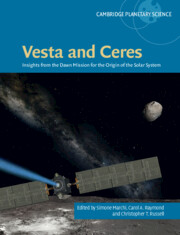Refine listing
Actions for selected content:
16950 results
7 - Physics in a curved spacetime
-
- Book:
- A First Course in General Relativity
- Published online:
- 02 July 2022
- Print publication:
- 30 June 2022, pp 170-182
-
- Chapter
- Export citation
13 - Cosmology
-
- Book:
- A First Course in General Relativity
- Published online:
- 02 July 2022
- Print publication:
- 30 June 2022, pp 415-467
-
- Chapter
- Export citation
1 - Special relativity
-
- Book:
- A First Course in General Relativity
- Published online:
- 02 July 2022
- Print publication:
- 30 June 2022, pp 1-32
-
- Chapter
- Export citation
11 - Schwarzschild geometry and black holes
-
- Book:
- A First Course in General Relativity
- Published online:
- 02 July 2022
- Print publication:
- 30 June 2022, pp 296-359
-
- Chapter
- Export citation
Frontmatter
-
- Book:
- A First Course in General Relativity
- Published online:
- 02 July 2022
- Print publication:
- 30 June 2022, pp i-iv
-
- Chapter
- Export citation
Preface to the third edition
-
- Book:
- A First Course in General Relativity
- Published online:
- 02 July 2022
- Print publication:
- 30 June 2022, pp ix-x
-
- Chapter
- Export citation
3 - The Hot Big Bang
- from Part I - The Homogeneous Universe
-
- Book:
- Cosmology
- Published online:
- 07 July 2022
- Print publication:
- 30 June 2022, pp 70-131
-
- Chapter
- Export citation
Contents
-
- Book:
- A First Course in General Relativity
- Published online:
- 02 July 2022
- Print publication:
- 30 June 2022, pp v-viii
-
- Chapter
- Export citation
7 - Cosmic Microwave Background
- from Part II - The Inhomogeneous Universe
-
- Book:
- Cosmology
- Published online:
- 07 July 2022
- Print publication:
- 30 June 2022, pp 259-335
-
- Chapter
- Export citation
6 - Curved manifolds
-
- Book:
- A First Course in General Relativity
- Published online:
- 02 July 2022
- Print publication:
- 30 June 2022, pp 141-169
-
- Chapter
- Export citation
Dedication
-
- Book:
- Cosmology
- Published online:
- 07 July 2022
- Print publication:
- 30 June 2022, pp v-vi
-
- Chapter
- Export citation
1 - Introduction
-
- Book:
- Cosmology
- Published online:
- 07 July 2022
- Print publication:
- 30 June 2022, pp 1-12
-
- Chapter
- Export citation
2 - The Expanding Universe
- from Part I - The Homogeneous Universe
-
- Book:
- Cosmology
- Published online:
- 07 July 2022
- Print publication:
- 30 June 2022, pp 15-69
-
- Chapter
- Export citation
Index
-
- Book:
- A First Course in General Relativity
- Published online:
- 02 July 2022
- Print publication:
- 30 June 2022, pp 491-498
-
- Chapter
- Export citation
5 - Preface to curvature
-
- Book:
- A First Course in General Relativity
- Published online:
- 02 July 2022
- Print publication:
- 30 June 2022, pp 111-140
-
- Chapter
- Export citation
Contents
-
- Book:
- Cosmology
- Published online:
- 07 July 2022
- Print publication:
- 30 June 2022, pp vii-xii
-
- Chapter
- Export citation

Vesta and Ceres
- Insights from the Dawn Mission for the Origin of the Solar System
-
- Published online:
- 01 April 2022
- Print publication:
- 31 March 2022
Preface
-
- Book:
- Vesta and Ceres
- Published online:
- 01 April 2022
- Print publication:
- 31 March 2022, pp ix-x
-
- Chapter
- Export citation
16 - Collisional Evolution of the Main Belt as Recorded by Vesta
- from Part III - Implications for the Formation and Evolution of the Solar System
-
-
- Book:
- Vesta and Ceres
- Published online:
- 01 April 2022
- Print publication:
- 31 March 2022, pp 250-261
-
- Chapter
- Export citation
17 - Epilogue
- from Part III - Implications for the Formation and Evolution of the Solar System
-
-
- Book:
- Vesta and Ceres
- Published online:
- 01 April 2022
- Print publication:
- 31 March 2022, pp 262-264
-
- Chapter
- Export citation
